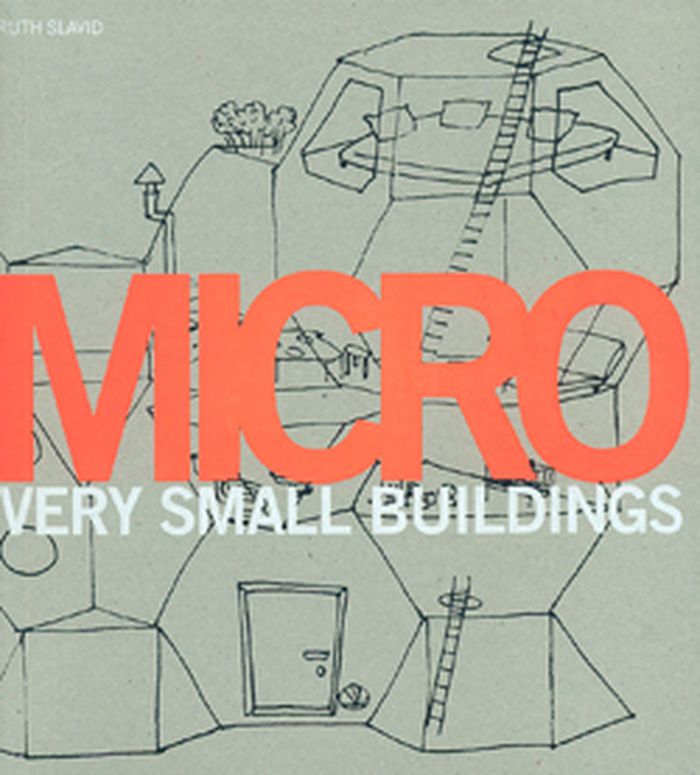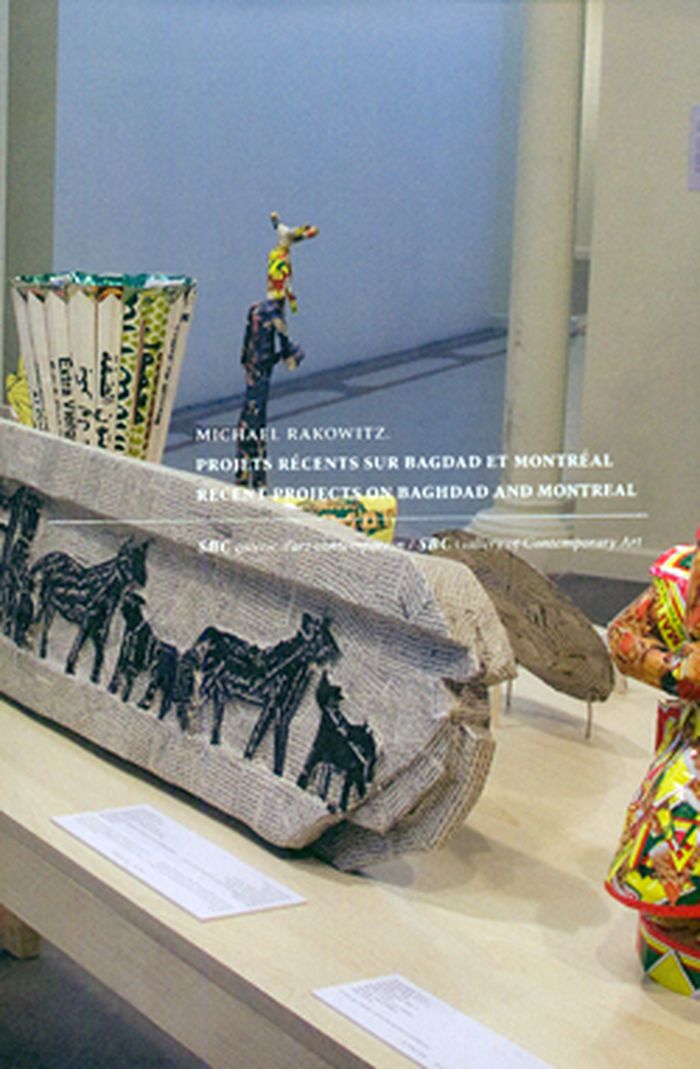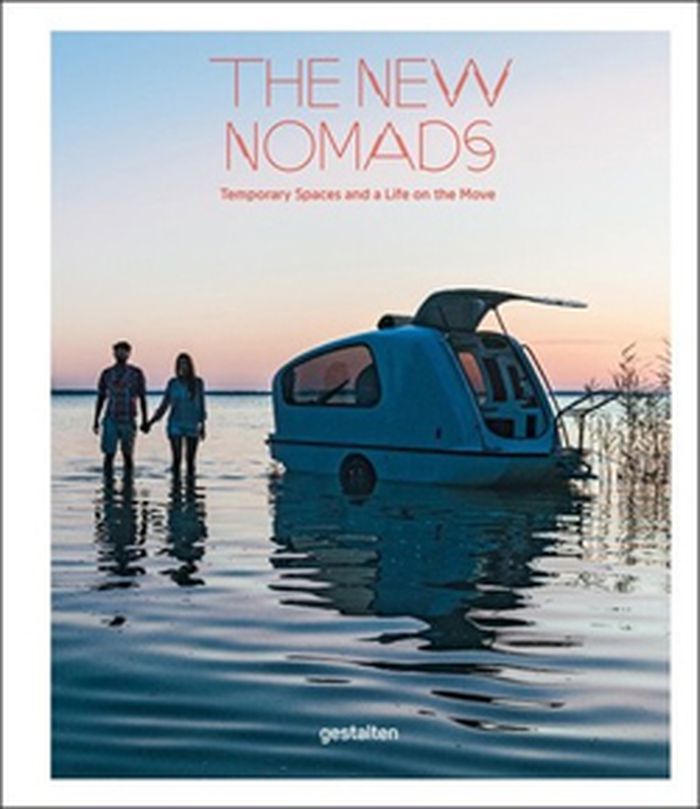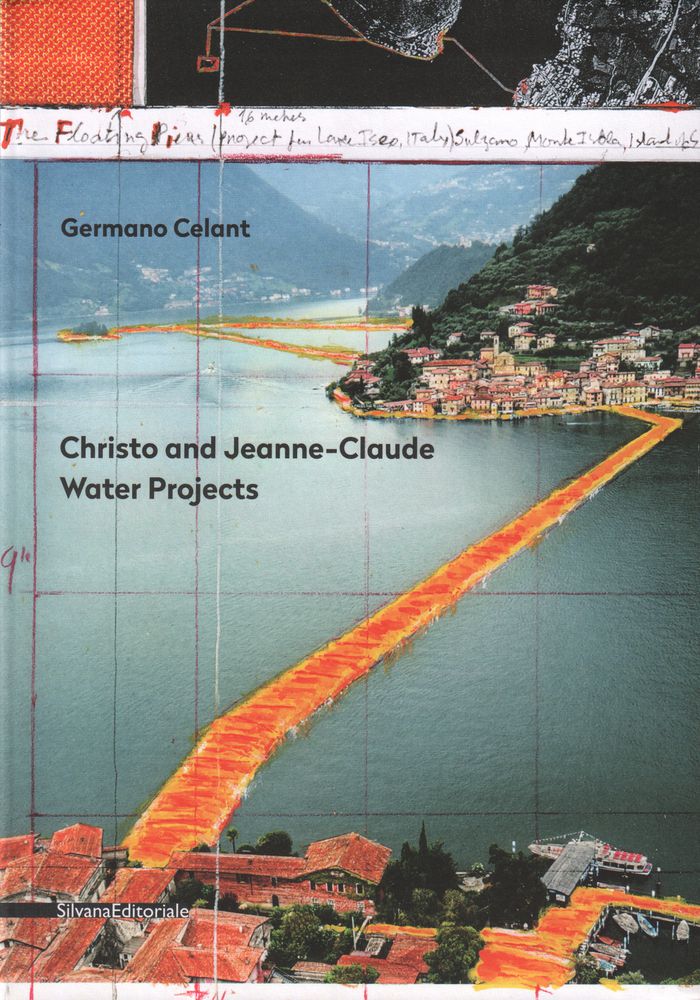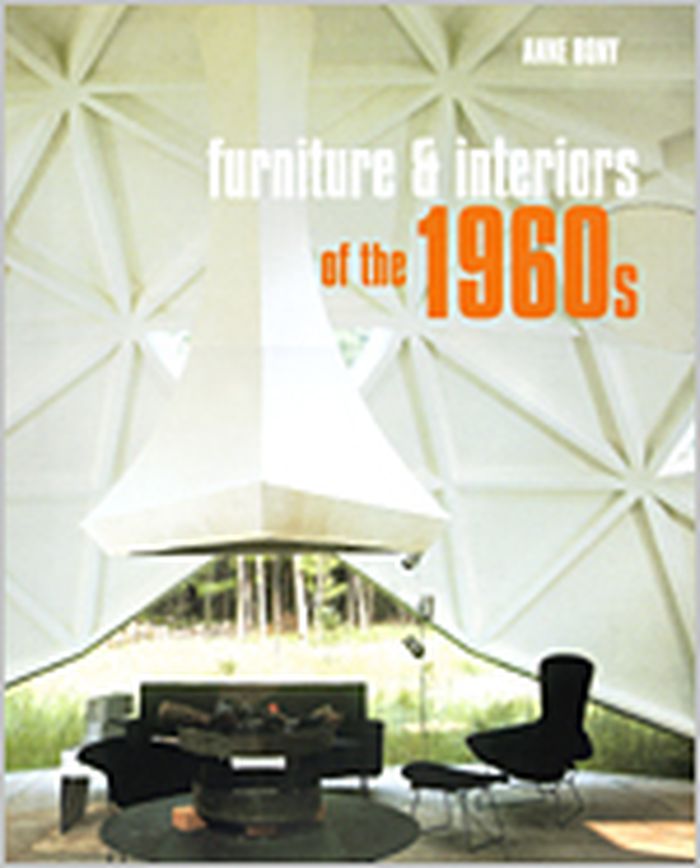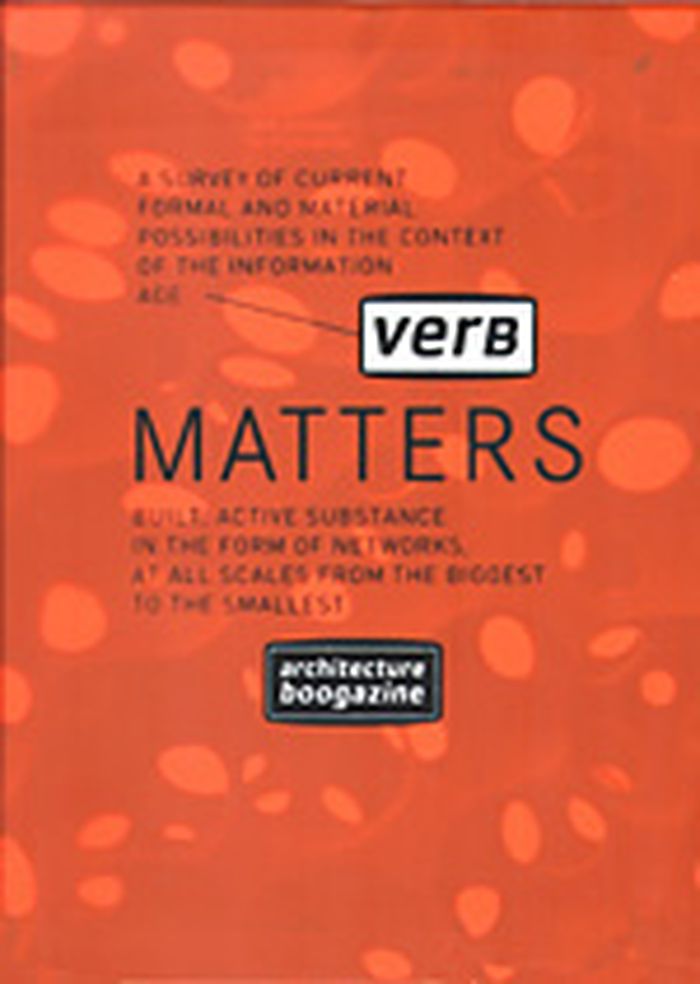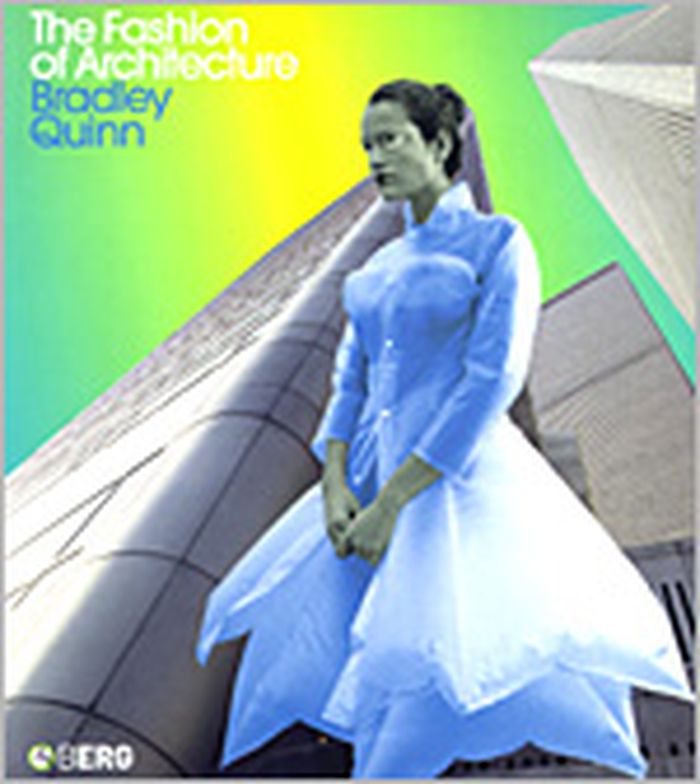Micro: very small buildings
$26.50
(disponible sur commande)
Résumé:
Very small buildings have a special appeal. The constraints of space and cost can actually liberate the imagination. Most of the projects in this book consist of no more than a few key spaces, in many cases just a single space. They are united only by their compact nature, the pleasure that they can provide, and the intelligence that they embody. A brief introduction is(...)
Micro: very small buildings
Actions:
Prix:
$26.50
(disponible sur commande)
Résumé:
Very small buildings have a special appeal. The constraints of space and cost can actually liberate the imagination. Most of the projects in this book consist of no more than a few key spaces, in many cases just a single space. They are united only by their compact nature, the pleasure that they can provide, and the intelligence that they embody. A brief introduction is followed by five thematic chapters: Public Realm, Community Spaces, On the Move, Compact Living, and Extra Space. The 53 case studies include a park bench that transforms into a shelter for the homeless in Australia, an inflatable treetop structure for rainforest observation, a portable house for victims of hurricane Katrina, a transportable church in Finland, and a suspended office in France.
Architecture miniature
Michael Rakowitz: recent projects on Baghdad and Montreal, projets récents sur Bagdad et Montréal
$30.00
(disponible sur commande)
Résumé:
An inspiring blend of sculpture, politics and gesture, the art of Michael Rakowitz (born 1973) makes a direct engagement with the larger dilemmas of the present, with ecological solutions and civic interventions. These include projects such as paraSITE, a series of inflatable plastic homeless shelters, each of which was tailored to the occupant's needs, and which was(...)
Michael Rakowitz: recent projects on Baghdad and Montreal, projets récents sur Bagdad et Montréal
Actions:
Prix:
$30.00
(disponible sur commande)
Résumé:
An inspiring blend of sculpture, politics and gesture, the art of Michael Rakowitz (born 1973) makes a direct engagement with the larger dilemmas of the present, with ecological solutions and civic interventions. These include projects such as paraSITE, a series of inflatable plastic homeless shelters, each of which was tailored to the occupant's needs, and which was designed to inflate by latching on to heat-exhaust ducts on the sides of buildings. In The invisible enemy should not exist—his most famous project to date—Rakowitz faithfully replicated the objects known to be missing or looted from the Iraqi National Museum during the U.S. invasion, using the cheap paper packaging of Middle Eastern import foods. This handsome volume surveys these and other recent projects.
$60.00
(disponible sur commande)
Résumé:
Mobility is the ultimate new form of freedom: freedom from routine, traditional values, and geographic restraints. Today's creatives thrive on a lifestyle that enables them to work six months in a shared office in Berlin, spend the summer in a caravan in Chile, and show up in time for their next project at a temporary desk in New York. This growing trend has generated(...)
The new nomads: temporary spaces and a life on the move
Actions:
Prix:
$60.00
(disponible sur commande)
Résumé:
Mobility is the ultimate new form of freedom: freedom from routine, traditional values, and geographic restraints. Today's creatives thrive on a lifestyle that enables them to work six months in a shared office in Berlin, spend the summer in a caravan in Chile, and show up in time for their next project at a temporary desk in New York. This growing trend has generated visionary ways of designing products and spaces that facilitate a nomadic yet high-tech life. From a modular dwelling system on wheels to an inflatable classroom in a repurposed dumpster, this book compiles a wide range of flexible spaces and innovative products that define today's nomads. Through innovative technology, and by (literally) thinking outside the box, the designers behind these concepts give people the freedom to call the entire world their home.
Maisons mobiles
livres
$199.95
(disponible sur commande)
Résumé:
This book presents 27 of the more than 600 projects and creations completed by one of the leading French contemporary architects. Some of these creations are very well known, not merely among design and interior architecture specialists but by the public at large. From inflatable structures (Kléber Colombes in the 1970s) to the headquarters of major firms (Ford, Renault,(...)
Ronald Cecil Sportes : classic not plastic
Actions:
Prix:
$199.95
(disponible sur commande)
Résumé:
This book presents 27 of the more than 600 projects and creations completed by one of the leading French contemporary architects. Some of these creations are very well known, not merely among design and interior architecture specialists but by the public at large. From inflatable structures (Kléber Colombes in the 1970s) to the headquarters of major firms (Ford, Renault, L’Oréal, BMCE Bank, among others), Ronald Cecil Sportes has created original works representing an engagement with a sleek and strikingly modern aesthetic. Sportes has designed many furniture items (chairs, lamps, etc.), designs honored by many museums, including Cooper-Hewitt in New York, Centre Pompidou in Paris, and Victoria and Albert Museum in London, who have devoted major retrospectives to the architect (beginning in 1985). Classic Not Plastic includes a documented index that enables the reader to discover the author's profound intentions as well as investigate further into Sportes' work.
livres
décembre 2004, Madrid
Architecture, monographies
$57.50
(disponible sur commande)
Résumé:
"Water projects" presents the complete series of large-scale projects implemented or devised by Christo and Jean-Claude from 1961 to 2016. In addition to the renowned wrapped monuments, from the Kunsthalle in Bern (1967–1968) to the Reichstag in Berlin (1971–1995), the works featured include installations made of barrels and fabrics such as Wall of Oil Barrels: The Iron(...)
Christo and Jeanne-Claude: water projects
Actions:
Prix:
$57.50
(disponible sur commande)
Résumé:
"Water projects" presents the complete series of large-scale projects implemented or devised by Christo and Jean-Claude from 1961 to 2016. In addition to the renowned wrapped monuments, from the Kunsthalle in Bern (1967–1968) to the Reichstag in Berlin (1971–1995), the works featured include installations made of barrels and fabrics such as Wall of Oil Barrels: The Iron Curtain (Paris, 1961–1962) and Valley Curtain (Rifle, Colorado, 1970–1972); huge inflatable objects like 42,390 Cubic Feet Package (Minneapolis, 1966) and 5,600 Cubic Meter Package; the project for Documenta IV (Kassel, 1967–1968); and paths (Wrapped Walk Ways, Kansas City, 1977–1978) and portals (The Gates, New York, 1979–2005). Also included are preparatory drawings for Christo’s latest work, Floating Piers (2014–2016), a walkway stretching nearly two miles that connects two small islands in Lake Iseo, in Italy’s Lombardy region, to each other and to the mainland.
$99.95
(disponible sur commande)
Résumé:
Think plastic. Think inflatable PVC chairs and TV tables. It must be the 1960s, when radical furniture designs "popped" next to new art, traditional designs were recast with new materials, and the results were often mixed in one room. One of the boldest decades of design in the twentieth century, this a decade of contradictions in styles that Anne Bony has captured in(...)
Furniture & interiors of the 1960s
Actions:
Prix:
$99.95
(disponible sur commande)
Résumé:
Think plastic. Think inflatable PVC chairs and TV tables. It must be the 1960s, when radical furniture designs "popped" next to new art, traditional designs were recast with new materials, and the results were often mixed in one room. One of the boldest decades of design in the twentieth century, this a decade of contradictions in styles that Anne Bony has captured in this book. "Furniture and interiors of the 1960s" pays homage to the vibrancy and buoyant energy of the decade's design trends and influences in 300 key designs that attract enormous interest and command unprecedented prices today. For the first time, America was leading a design revolution with Wendell Castle's Molar and Castle chairs, Estelle Lavergne's lucite furniture and the experiments of Ray and Charles Eames. Warren Planter, Hans Knoll, Harry Bertoia, Alexander Girard, and Robert Propst were world-ranked designers who pioneered new directions in furnishings and accessories that appeared in trendy homes and offices in Europe and Asia.
Design d’intérieur
Verb - matters
$41.95
(disponible sur commande)
Résumé:
The second issue of Verb asks: What can we really build? Verb Matters explores the formal and material possibilities for construction in our present information era, with its extensive data processing, global networking, and increasingly blurred distinctions between natural matter and artificial technology. This critical itinerary begins with reflections on the results of(...)
Revues
mai 2002, Barcelona
Verb - matters
Actions:
Prix:
$41.95
(disponible sur commande)
Résumé:
The second issue of Verb asks: What can we really build? Verb Matters explores the formal and material possibilities for construction in our present information era, with its extensive data processing, global networking, and increasingly blurred distinctions between natural matter and artificial technology. This critical itinerary begins with reflections on the results of sophisticated ideas applied to the shaping of buildings including Toyo Ito's ephemeral work, recent attention to inflatable architecture and building with air, and the low tech approach of practitioners like LOT/EK. Consideration of the growing potential of current technology is also examined in a piece equating recent sneaker design technology to that of car manufacturing, as well as the use of artificial intelligence in home control networks at MIT's "Media House" project. Colorful, tactile, dense, and packaged in its own very contemporary design, Verb Matters remains devoted to cutting-edge issues in architecture and design. includes contributions from Toyo Ito, Greg Lynn, LOT/EK, Klein & Dytham, and Sherry Turkle
Revues
Lee Friedlander: Christmas
$100.00
(disponible sur commande)
Résumé:
Whether or not you celebrated Christmas at some point during the last 70 years, you have no doubt encountered many of the scenes shown here in Lee Friedlander's eclectic black-and-white documentation of the holiday season across America. From city sidewalks to cookie-cutter suburbs, Friedlander captures it all: main street store window displays; plastic nativities on(...)
Lee Friedlander: Christmas
Actions:
Prix:
$100.00
(disponible sur commande)
Résumé:
Whether or not you celebrated Christmas at some point during the last 70 years, you have no doubt encountered many of the scenes shown here in Lee Friedlander's eclectic black-and-white documentation of the holiday season across America. From city sidewalks to cookie-cutter suburbs, Friedlander captures it all: main street store window displays; plastic nativities on snow-covered lawns; inflatable snowglobes and Santa Clauses; questionable St. Nicholas–themed lingerie; oversize or underwhelming Christmas trees; and houses so covered in string lights as to demand nothing short of a miracle from the local power grid. As in all of his work, Friedlander's images of Christmas reflect his own version of the holiday. Is Christmas in America a religious celebration? A commercial precept? A misunderstanding? An indulgent blasphemy? Or all of the above? The only certain thing is that December 25 has provided an opportunity for the people's photographer to hold up a mirror to a flawed, inventive, preoccupied and wonderful society.
Monographies photo
The fashion of architecture
$44.95
(disponible sur commande)
Résumé:
Architecture is making its presence felt in cutting-edge fashion. The pliable metals, membrane structures, lightweight glasses and plastics used in building construction are creeping onto the catwalk. As they do so, their impact on recent textile developments has produced fabrics that enable clothing to act as individual climate-controlled environments that can exchange(...)
Théorie de l’architecture
décembre 2003, Oxford / New York
The fashion of architecture
Actions:
Prix:
$44.95
(disponible sur commande)
Résumé:
Architecture is making its presence felt in cutting-edge fashion. The pliable metals, membrane structures, lightweight glasses and plastics used in building construction are creeping onto the catwalk. As they do so, their impact on recent textile developments has produced fabrics that enable clothing to act as individual climate-controlled environments that can exchange information with embedded sensors, resulting in wearable "dwellings" that act as both shelter and clothing. At the same time, architects are borrowing the techniques of pleating, stapling, cutting and draping from traditional tailoring to design buildings that are flexible, interactive, inflatable and even portable. Although the relationship between architecture and fashion was recognized more than a century ago, the connection between them has rarely been explored by historians, designers or practicing architects. "The Fashion of Architecture" is the first attempt to investigate the contemporary relationship between architecture and fashion in considerable depth, by examining the ideas, imagery, techniques and materials used by visionaries such as Martin Margiela, Issey Miyake, Alexander McQueen, Tadao Ando and Daniel Libeskind. As mavericks ranging from Hussein Chalayan and Rei Kawakubo to Rem Koolhaas and Zaha Hadid describe architecture’s role in the formation of fashion identities, new readings of both areas emerge. Probing and far-reaching in its content, The Fashion of Architecture is the most comprehensive study of this exciting area to date.
Théorie de l’architecture
livres
Portable architecture
$85.50
(disponible sur commande)
Résumé:
Designers included in the first edition have continued to exercise their skills on new projects that are progressions from their former work. The nature of this book is that the case studies are primarily projects that have been taken to completion, however, it is of interest that several of the designers included here are currently involved in much more(...)
Portable architecture
Actions:
Prix:
$85.50
(disponible sur commande)
Résumé:
Designers included in the first edition have continued to exercise their skills on new projects that are progressions from their former work. The nature of this book is that the case studies are primarily projects that have been taken to completion, however, it is of interest that several of the designers included here are currently involved in much more ambitious projects. The Millennium Dome is also discussed in the introduction as an example of large scale portable architecture and a high profile building in the UK. The overriding purpose of this book is to show that portable buildings are eminently feasible, capable of a wide range of roles and economic to build and operate. They can also be subversive as well as sensitive, amusing as well as appropriate, energetic as well as economic. This second edition of 'Portable Architecture' includes work by two new design teams and seven new case studies to help further define the relevant characteristics of this important strand of contemporary building design. The projects completed by the two new designers introduced in this edition have been included for very difference reasons. Architects Branson Coates designed Powerhouse::UK, a temporary British products design exhibition sponsored by the UK Department of Trade and Industry represents an establishment based endorsement of a portable building. Festo KG's 'Airtecture' hall uses inflatable technology and fundamentally could not be more different, it was not reported in the main stream press yet it won many industrial design awards.
livres
janvier 1900, Oxford
Structures d’ingénierie
